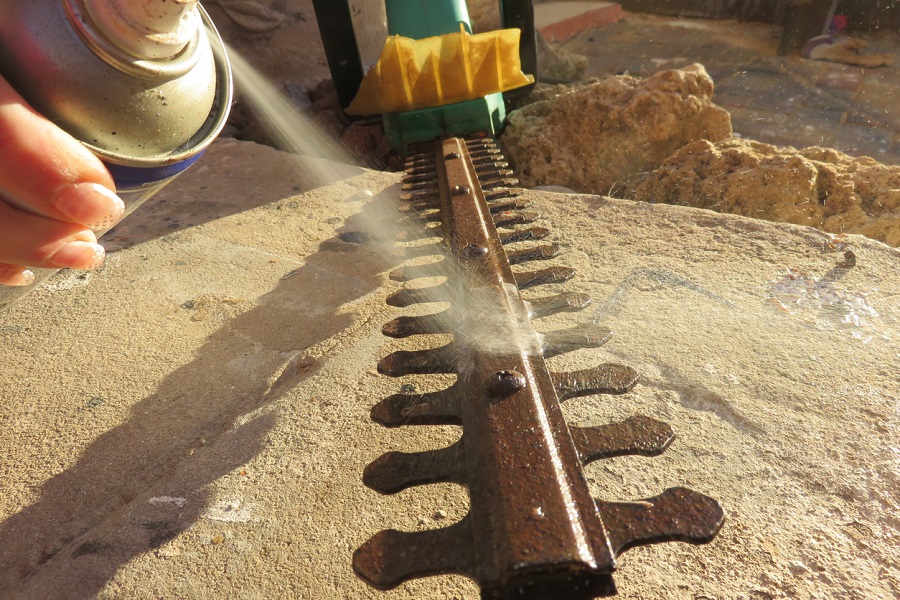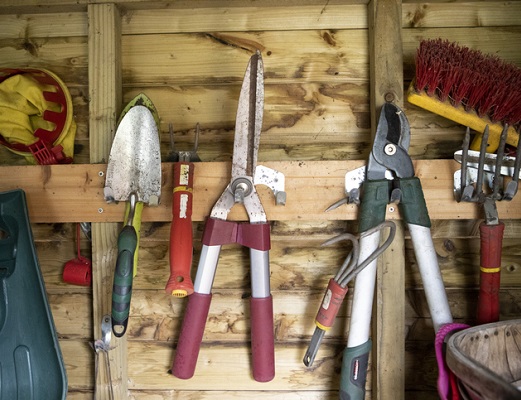Ultimate Guide to Garden Tool Maintenance
Reading time: 4 minutes
How to clean garden tools
It is recommended that garden tools are always cleaned after they have been used, though the technique will change depending on the type of equipment that you have worked with.
For cultivation tools such as forks, hoes, rakes, spades and trowels, you will want to use a stiff scrubbing brush to get rid of any soil from the tool’s blade and shaft.
Have you been working in a particularly muddy outdoor space? Use a hose to wash equipment that has become very muddy, ensuring that the tools are then dried using an old towel – wooden handles that are left wet will absorb the water and swell, while metal handles can rust because of the water.
If your professional garden work has seen you make use of cutting tools such as knives, loppers, pruning saws, secateurs and shears, the main concern will be the build-up of grime on the equipment’s blades.
Use either wire wool or a nylon pan scourer to wipe dried-on sap off these garden tools, before getting rid of the remaining grime using a clean cloth once the metal is smooth and clear.
Once your cultivation and cutting tools are clean, ensure they are stored in a location that is also clean as well as dry. Make sure to oil any tools with moving parts before putting them away, to help reduce the risk of rusting and mechanisms seizing up.
Don’t forget to clean your gardening gloves too, as these may have come into contact with vulnerable seedlings and exposed roots around a garden. Fail to wash these off and you could unknowingly spread diseases when next working around plants.
Fabric and synthetic fibre garden gloves can be cleaned by putting them into a washing machine that is on a cold cycle with normal laundry detergent.
For rubber gloves though, follow these steps:
1. Run the gloves under cold water while still being worn, so that loose debris can be instantly washed off.
2. Without removing the gloves, wash your hands as normal using a bar of soap.
3. Rinse the gloves using clean water and then hang them outside so that they can dry.
Whenever any gardening gloves are being cleaned, make sure to look for any tears or cuts in the material. These will be signs that it is time to buy some new garden gloves, as the worn ones could damage your hands when next worn for a job.
How to clean rust from garden tools
Have you left gardening tools without being cleaned for so long that they have started to rust?
This rust does not necessarily mean that it is time to replace the equipment, however – try this technique for removing the rust first:
1. Depending on the size of the garden tool that is rusting, place the piece of equipment into a container.
2. Pour white vinegar into the container so that all of the rusted parts of the tool become submerged.
3. Leave the tool to soak in the vinegar for between 12 and 24 hours – depending on how thick the rust is.
4. At the end of this duration, remove the tool from the container and wipe any remaining bits of rust off the metal by hand using a heavy-duty scouring pad.
5. Use clean water to rinse the tool so that all remaining rusty flakes of rust are removed, as well as any traces of vinegar.
6. Dry the entire tool with a soft cloth.
7. Apply a few drops of multi-purpose oil to the blade and joints of the tool to prevent any new rust from developing, using a cloth to evenly distribute the oil.

There will be times when even the most thorough cleaning will not be able to restore gardening equipment to the point where they can be used to complete a job effectively though.
Fortunately, we have a wide selection of high-quality garden tools available when it is time to update your equipment.
Be sure to also check out our guide on the seven essential gardening power tools – you may come across equipment that you have not used before that will help make gardening jobs faster and more efficient.





